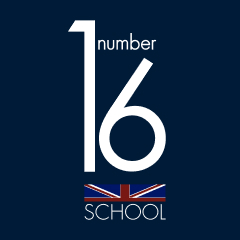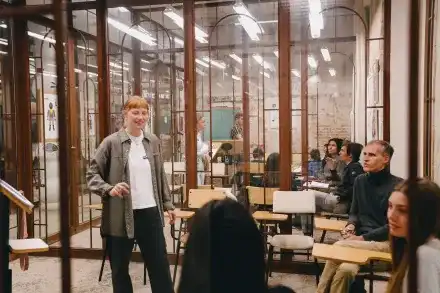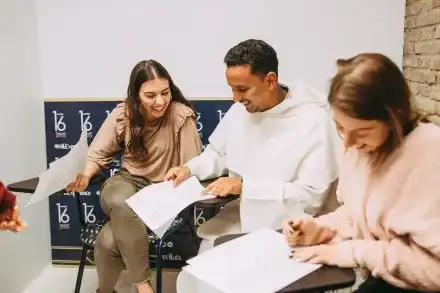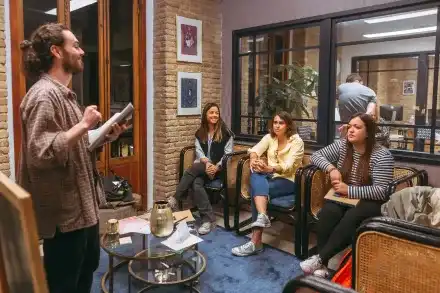Si estás interesado en aprender sobre el uso del verbo "to be" en pasado, este post te brindará información útil para utilizarlo en tus conversaciones y contar anécdotas en inglés. Aunque el verbo "to be" es esencial, su conjugación en pasado no es tan simple.
A continuación, exploraremos la estructura del pasado del verbo "to be" y algunas de sus aplicaciones.
Conjugación del verbo "to be" en pasado:
A diferencia de los verbos regulares (que terminan en -ed), el verbo "to be" es irregular y no sigue la misma estructura en pasado.-
Frases afirmativas del verbo to be
| PRONOMBRE | VERBO “TO BE” PASADO | EJEMPLO |
| I | Was | “I was in bed at 10.” |
| YOU | Were | “You were in your bedroom.” |
| HE/SHE/IT | Was | “He was in the garden.” |
| WE | Were | “We were very scared” |
| YOU | Were | “You were only little.” |
| THEY | Were | “They were too late for the movie.” |
-
Frases negativas del verbo to be
| PRONOMBRE | VERBO “TO BE” PASADO | CONTRACCIONES | EJEMPLO |
| I | Was not | Wasn’t | “I wasn’t happy with my result.” |
| YOU | Were not | Weren’t | “You weren’t at home for lunch.” |
| HE/SHE/IT | Was not | Wasn’t | “It wasn’t cold today.” |
| WE | Were not | Weren’t | “We weren’t ready for summer.” |
| YOU | Were not | Weren’t | “You weren’t hungry enough.” |
| THEY | Were not | Weren’t | “They weren’t available for the meeting.” |
-
Frases interrogativas del verbo to be
¿Cuándo se usa el verbo to be en inglés?
El verbo "to be" en pasado tiene diversas aplicaciones que veremos a continuación:- Atribuir información adicional a un sustantivo:
- Brindar información sobre cosas o personas en relación con cantidades, empleo u objetos que poseíamos en el pasado:
- Utilizamos frecuentemente la estructura "there was" (singular) y "there were" (plural) para referirnos a la existencia de algo en el pasado:
El verbo "to be" en pasado como verbo auxiliar:
A partir del verbo "to be", podemos formar el tiempo verbal "past continuous" con la siguiente estructura: SUJETO + WERE/WAS + VERBO (ING) El "past continuous" se utiliza para hablar de una acción en el pasado que ocurrió durante un período específico. “I was playing football last night.” “They weren’t studying this afternoon.” “Was he sleeping when you arrived?” Recuerda practicar y utilizar el verbo "to be" en pasado en tus conversaciones para mejorar tu fluidez y comprensión del inglés. ¡Sigue aprendiendo y divirtiéndote mientras adquieres confianza en el uso de esta forma verbal! Para completar esta información, echa un vistazo a nuestro post: tiempos verbales en inglés.False Friends en inglés: Las palabras que parecen pero no son
Descubre las palabras en inglés que parecen tener un significado pero realmente significan otra cosa.
Los 20 Phrasal Verbs que necesitas para hablar como un nativo
Aprende los Phrasal Verbs más usados en inglés y cómo incorporarlos a tu conversación diaria.
Beneficios de ser bilingüe
Hablar dos idiomas no solo mejora tu comunicación, sino que cambia tu cerebro. Conoce los beneficios aquí.




